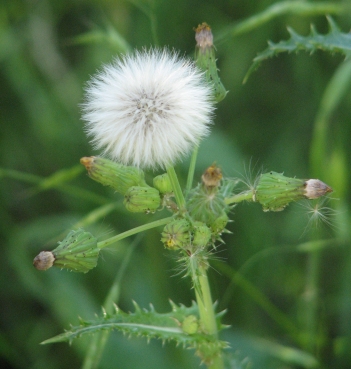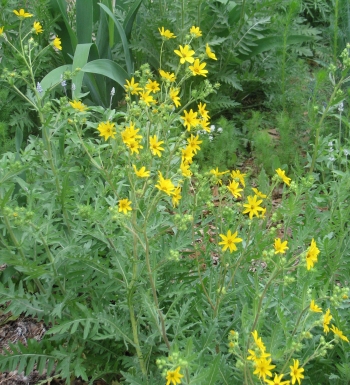Yellow Star Thistle Centaurea solstitialis. More like a cactus than a thistle, this sprawling, lanky, readily branching plant has pithy, flattened, winged stems which branch in asymmetric patterns, forming a messy looking mass of spines. The long, stiff, very narrow, dusty green leaves are arranged alternately at irregularly spaced nodes, each leaf tipped with cactus like spines. Stems potentially branch at each node, creating a tumbling habit. The flower heads are bright yellow globes that sprout from fleshy, fruit-like pedicles 3-4” long which are covered in thorns. Common on disturbed soils, roadsides, otherwise the plant is soon crowded out by grasses and taller plants. (Pl Rn X Old Clark) (218) 6/25/15; 6/15/16- ; 6/10/17- ; 6/7/18 ; 19 not recrd;

Yellow Star Thistle habit; an irregular mass of sprawling, pithy, flattened, winged stems armed with cactus like spines, bearing yellow, globe like flowers on fleshy pedicles
Note; flattened, ‘winged stems’ and grey-green color

Note; tumbling, readily branching growth habit produces mounds of weakly upright stems, thorns and leaves

Note; bright yellow globe flower on a fleshy, fruit-like pedicle, with inch long cactus like thorns.



























